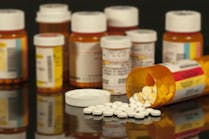Readers respond: A perspective about the rarity of biotin interference and mitigating risk
Diagnostics are foundational to medical decision-making, so we appreciate healthy scientific and clinical dialogue about reducing lab errors, including interferences such as biotin. The article by Dr. Ramani Wonderling, “A closer look at the recent FDA safety communication about biotin interference” (MLO. 2018;50(3):44-45), however, missed the opportunity to provide up-to-date data about biotin use and its pharmacokinetics or practical direction.
It is first important to provide real-world perspective on biotin use today, as data from 2017 reporting biotin sales may be reassuring to laboratorians and clinicians. Over a three-year period (July 2014-June 2017), biotin sales in the United States have been trending slightly upward, with the steadiest growth in doses 2.5 mg and under, levels that pose a very low risk to lead to interference. Sales of 5 mg doses have declined, according to Nielsen FDM Data ending June 2017.1
In terms of evaluating the extent of biotin use, it’s also valuable to note that in May 2017, a manufacturer of high-dose biotin (corresponding to 10,000 times the recommended daily intake of biotin) withdrew its application for the treatment of progressive multiple sclerosis.2 Therefore, while over-the-counter biotin can be recommended as a treatment due to its benefits in metabolism-related disorders, there is no available, approved prescription high-dose biotin for the treatment of any disorder.
Second, a pharmacokinetic study, also published in 20173 (doi.org/10.4155/ipk-2017-0013), provides clarity and useful guidance to laboratories regarding biotin doses and washout periods.
Topline findings are:
- Biotin as one ingredient within a daily multivitamin (30–40 mcg) has no effect on assays.
- 100 percent of subjects in the study taking 5 mg of biotin per day are below a tolerance threshold of 30 ng/mL within 3.5 hours.
- 100 percent of subjects in the study taking 10 mg of biotin per day are below a tolerance threshold of 30 ng/mL within eight hours.
- Subjects taking 20 mg of biotin per day may need to discontinue biotin intake for longer than eight hours prior to testing.
Also supported by a rich body of robust, clinical evidence is the reason most manufacturers utilize the biotin-streptavidin design for their assays: it offers the strongest, non-covalent biological interaction known. The strength and specificity of this interaction has led it to be one of the most widely used affinity pairs in molecular, immunological and cellular assays.
To date, we know of no confirmed cases of biotin interference violating our company’s label claims. For perspective, globally, of the more than 1.4 billion thyroid tests, and 4.1 billion electrochemiluminescence assays performed between 2016 and 2017, we are aware of 32 cases where biotin concentrations above the threshold stated in the package insert affected the results of the test. This is an extremely low incidence of confirmed interference.4
The potential for interferences affects all laboratory tests and has always been part of the narrative. All major manufacturers have assay menus where biotin might influence test results. No assay is “invulnerable,” as suggested by Dr. Wonderling.
There are many established ways to mitigate interference potential, such as following direction provided in the package inserts and serial testing in acute situations, e.g., patients with suspected myocardial infarction, per American Heart Association and American College of Cardiology guidelines as well as institution departmental policies. Increased awareness and education, as recommended in the November 2017 FDA Safety Communication,5 can only result in reduced errors and more informed clinical decision-making.
We support a full range of educational efforts and best-practice exchange for how laboratorians can mitigate risks as well as educate physicians and patients about reporting biotin use.
—Christopher A. Bird, PhD
Head of Medical and Scientific Affairs
Roche Diagnostics Corporation
References
1. Nielsen Food Drug Mass (FDM) Retail Sales Data from July 2014 –June 2017.
2. Med Day Pharmaceuticals. 13 November 2017.
3. Grimsey P, Frey N, Bendig G, Zitzler J, Lorenz O, Kasapic D, Zaugg C. Population pharmacokinetics of exogenous biotin and the relationship between biotin serum levels and in vitro immunoassay interference. International Journal of Pharmacokinetics. doi; 10.4155/ipk-2017-0013.
4. Roche data on file.
5. U.S. Food and Drug Administration. Biotin (Vitamin B7): Safety Communication – May interfere with Lab Tests. November 28, 2017.




